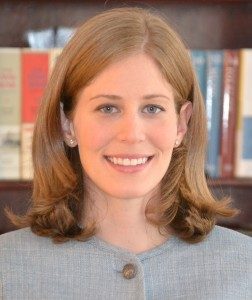By Drew Jacobs
I recently spoke with Chris Rominger, a History major at Middlebury College who graduated in the Spring of 2008. Chris came to Middlebury in 2004 interested in history. His first semester he took a class with Professor Burnham, which solidified his interest in the major. While he mainly studied European history in High School, he quickly fell in love with the history of the Middle East while at Middlebury. He took Intro to the Modern Middle East with Professor Armanios his freshman spring and soon declared as a History major. In 2004, Chris explained, the Middle East was quite topical and always in the news. Chris also found he loved studying a region so different from his own. He especially enjoyed the focus on discussions and writing within history courses at Middlebury. He believes this focus makes history a more interactive, fluid, and ongoing study. These beliefs have helped to shape his career post-graduation.
Upon graduation, Chris began work for the Arab American Association of New York, a non-profit organization assisting with adult education, advocacy, and social services for immigrants from the Middle East. He worked there for three years, first as an English teacher and later as Associate Director. While he thoroughly enjoyed teaching, Chris missed studying and writing about history in a college setting. As such, he got back in touch with some Middlebury History professors for advice on graduate school and a potential career as a History professor. He explained how Professor Armanios, his college advisor while at Middlebury, was especially helpful at this time. She explained how academia is a tough business to break into, but happily wrote letters of recommendation for Chris when he was applying to graduate school. Ultimately, Chris was accepted to CUNY Graduate Center and is finishing up his Ph.D. this Spring.
Chris has been writing his dissertation on migration from Tunisia around the first World War period. Specifically, he examines how the experience of travel affected one’s political beliefs, cultural affinities, and day to day life. He has researched North African soldiers, political dissidents, Tunisian Jews and more peoples. Chris even took a year off from school to travel to Tunisia to further both his research and his Arabic. Chris recently accepted a position to teach Middle East and French history at the University of North Florida starting next Fall. He credits the Middlebury College History department for helping him to discover his passion for history.
 I recently spoke to Amanda Brickell Bellows ’08, a historian of the United States in a comparative and transnational perspective. She currently teaches at Hunter College and The New School and works as a historian at the New-York Historical Society. Professor Bellows returned to Middlebury this past January to teach a survey course about human bondage, entitled Introduction to Global Slaveries: From Ancient Greece to the Present.
I recently spoke to Amanda Brickell Bellows ’08, a historian of the United States in a comparative and transnational perspective. She currently teaches at Hunter College and The New School and works as a historian at the New-York Historical Society. Professor Bellows returned to Middlebury this past January to teach a survey course about human bondage, entitled Introduction to Global Slaveries: From Ancient Greece to the Present.